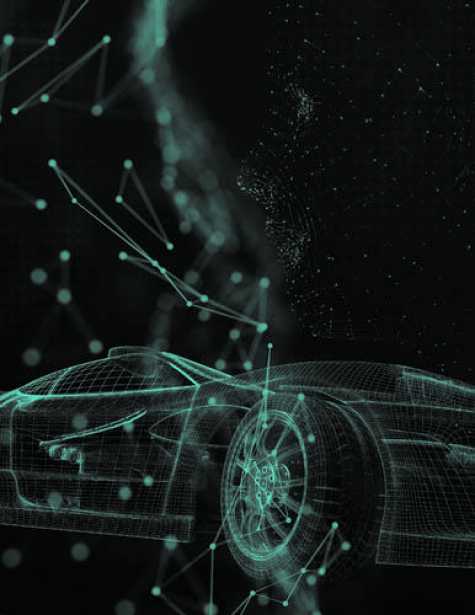Specifically, newer vehicles tend to have more parts replaced, lower alternative parts utilization and a lower repair percent of total labor spend. Add to this the fact that vehicles overall have become more complex, and these trends accelerate even further.
Growth in electronic vehicle content---items added to address vehicle safety or convenience also add to the overall cost and complexity of repair and the need to understand OEM-recommended repair procedures. Not only are more parts per claim required, but additional labor not included in the labor for part replacement is needed for calibration, reset and scan operations.
Repairers, insurers and OE manufacturers managing certified collision repair networks know the importance of managing repair cycle time, and actively monitor the differences between the planned and actual events for key process steps such as vehicle in, repair start, repair complete and vehicle out. The primary goal? Shave wasted time from the claim and repair process and streamline communication among all parties.
Over the last five years, the average days between vehicle in and repair start, and the average days between repair complete and vehicle out have remained the same or seen moderate improvement, yet remain an opportunity for the industry to further streamline check-in and check-out.
But it is the full repair time, the average number of days from the date the vehicle is brought into the shop to the date it is picked up (a 24-hour / 7-day measurement), or “keys to keys”, that has seen the most change, growing from 8.5 days in CY2013 to 9.5 days in CY2017 (see Figure 1).
Figure 1
The improvement in “vehicle in” to “vehicle out” days average between 2016 and 2017 may be driven most by the slight drop in the volume share that were both non-drivable and the highest appraisal cost (see Figure 2).
Figure 2
Yet despite the drop in non-drivable and the repairs costing more than $10,000, volume overall has shifted into the higher dollar brackets, just as we saw with appraisal volume overall. With more parts and labor cost per claim, both the overall repair cost and the repair time have risen.
Figure 3
Figure 3 illustrates how repair cycle times grow as do repair costs, with repair costs $0.01 to $500 taking 2.5 days, versus 20 days-plus for vehicles in highest repair cost ranges.
Figure 4
Unfortunately, as repair costs rise, both efficiency of repairers (see Figure 4) and customer satisfaction with the repairer and the insurer fall (see Figure 5).
Figure 5
A comparison of the ‘kept informed’ CSI score shows much less variation among repair cost dollar ranges, but the fact that there is a lower score for the higher cost repairs suggests those customers may need additional hand-holding and updates throughout the repair process (see Figure 6).
Figure 6
Prior analysis of customer satisfaction data conducted by CCC shows quality repairs and few returns lead to scores; yet if the shop wants positive customer recommendations, it needs to make sure the service is great and customers are kept informed. In other words, quality is table stakes---Service gets repeat business. With “Previous Experience” and “Recommendations” chosen as key reasons why an individual selects a specific collision repairer, capturing business is as important as keeping it.
As repairers look to load balance among locations and specialize work, understanding the impacts to cycle time and productivity will become increasingly important. A shop handling non-drivable, higher-cost repairs could see significantly different results; factoring these differences in repair mix and performance assessment will be increasingly important.
The collision repair industry is challenged with repairing a broad range of vehicles, where vehicle complexity has grown dramatically for the youngest vehicles that have seen a resurgence in volume share on the heels of several years of record new vehicle sales.
The next several years will be challenging as automakers compete to position themselves for the changing world of personal mobility, introducing more technology that is complex and expensive to repair, but may not immediately deliver on all its promises in terms of accident prevention. Now more than ever, it is essential for the automotive claims and collision repair industries to stay current on new technologies, tooling and training. All increase the operating costs in a professional facility. Completing a vehicle repair in a manner that follows recommended repair procedures can help head off any potential unplanned returns of the vehicle, and keeping the customer well-informed throughout the process will help keep the ever-more demanding customer satisfied with their repair experience.
Technology plays a key role in a company’s ability to quickly assess and respond to consumer feedback and other information on market conditions. It also holds great potential for improving communication and collaboration with customers and business partners. Knowing how to use technology to cater the claims and vehicle repair experience to each distinct customer will lead to higher levels of customer satisfaction, retention and growth.
The information and opinions in this publication are for general information only, are subject to change and are not intended to provide specific recommendations for any individual or entity. Although information contained herein has been obtained from sources believed to be reliable, CCC does not guarantee its accuracy and it may be incomplete or condensed. CCC is not liable for any typographical errors, incorrect data and/or any actions taken in reliance on the information and opinions contained in this publication. Note: Where CCC Information Services Inc. is cited as source, the data provided is an aggregation of industry data related to electronic appraisals communicated via CCC's electronic network or from total loss valuations processed by CCC. Where AIS is cited as source, the data provided is an aggregation of industry data collected from claims data communicated via AIS’s electronic network.
source: http://www.autobodynews.com/index.php/industry-news/item/14984-today-s-vehicles-driving-change-within-the-collision-repair-industry.html







